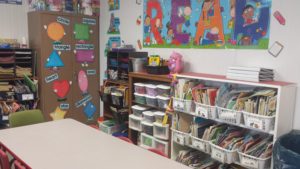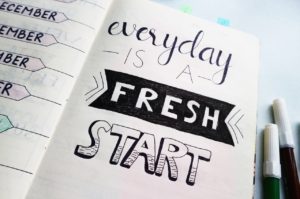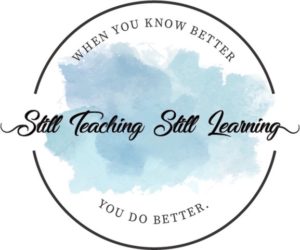
Back to school season — when there is so much to do and it feels like there is so little time to get it all done. Adding on even one more obligation or task feels overwhelming.
I’m working on stopping the overwhelm and focusing on getting only the most important things done. I’m not there yet, but here are some ideas that are helping me. I hope they’ll help you too!
1 – Fill in all the dates on your planner. Nothing helps me to feel more in control than to see what is coming up so that I can prepare for it.
In addition to all the meetings and the deadlines for teaching (report card season for example), consider putting some (or all) of your personal commitments on your teacher planner calendar as well. This helps you to see when you might need to get ahead on some teaching tasks so that you will have more time for a personal task that is coming up (such as a birthday party or a weekend away).



2 – Your planner will be even more valuable to you if you also use it as a journal of sorts. Take a moment every couple of days and make a quick note to yourself about how that lesson or that STEM challenge went. If there are things you want to remember for next year (omit this lesson, find another practice task for that lesson), write it down! You don’t have to write a book, just a few words that will jog your memory later.
If you don’t have a planner that you love, take a look at some of the most popular and useful planners here:
*Erin Condren Life Planner
*Bloom Planner
*The Happy Planner
3 – Use whatever money you have available to stock up on supplies for YOU. Here is a link to my post about back to school supplies for teachers.
At the very least, make an Amazon wish list and when anyone asks what they can do to support you, send them the link. You might feel uncomfortable doing this, but if people are asking how they can help, they really would appreciate seeing a list of specific things you need.



4 – Continue to build those relationships with your students. Start with knowing their names and how to pronounce them. If you’re not sure how to pronounce a name, ask the student what their family calls them. Do your best to pronounce it correctly.
Continue working hard on getting to know your students’ interests and passions outside of school. Mention those interests in lessons when you can, ask how a soccer game went, ask about the new puppy their family just got. These little “remembrances” of what students have shared with you will go a long way to helping them see that you truly do care about them.



5 – Call or email parents to say something positive about their child. This helps to build great relationships with families. Even if you have to call later in the year with not-so-great news, setting the tone from the beginning will help establish a positive tone. This lets parents know that you are on their side and looking out for their child’s best interests.



6 – Take a look at upcoming units and think about what new technology tools or read-aloud books or problem-solving tasks you could include. Part of the fun of teaching is finding new ideas to incorporate into your lessons. At the beginning of the year, while setting up your classroom, you probably don’t have as much time to even think about all those great options you have found or learned. Now is the time to stop, take a breath, and look at some of those tools and how you might incorporate them.



7 – I am a huge proponent of reading aloud to students. It calms and resets both teachers AND students. It models fluent reading. It also models every other reading strategy if you stop and model how you think about what you are reading. It helps students make connections between different subject areas and different topics. Look for some fun new read-aloud books to try.
If you need some ideas, check out my post on great picture books, favorite chapter books, and how I incorporate #Classroombookaday.



8 – Set some goals for the year. Think about what you did or didn’t do last year and areas where you want to improve. Administrators will always impose goals on you from the district level or from the school improvement plan. Those goals are also valuable and important, but think about goals that are specific and more meaningful to you.
Here are some of my goals for now:
~cut down on “teacher talk” by scripting my exact points (so I don’t ramble) and limit time for minilessons;
~use more engagement strategies (watch for a future post about some of these);
~more intentional small group instruction during math (listing exactly who I will pull for a small group and exactly what skill we will practice);
~continue using formative math assessments (watch for a future post about this as well);
~watching out for these “4 Things Teachers Shouldn’t Be Asking Their Students to Do”
When I believe that I have made good progress toward these goals (or when these goals become routine habits), I set new goals. Sometimes it takes all year to continue working on the same goals, and that’s okay too! Identifying ways in which you want to improve your own practice is empowering.



I hope you found an idea or two to try! Let me know what you think. And watch for part 2 of this post coming up this week!
